Scott Kelly’s Year In Space Apparently Caused Changes In His DNA (Updated)
After a year in space, Astronaut Scott Kelly was no longer 100% genetically identical to his twin brother. However, the changes are not as significant as initial media reports made them out to be.
Just over two years ago, American astronaut Scott Kelly returned to Earth after spending a year on the International Space Station. The main purpose of Kelly’s mission was to study the impact of long-term space travel on the human body. As part of this study, NASA scientists were taking advantage of the fact that he has an identical twin, former Astronaut Mark Kelly the husband of former Congresswoman Gabby Giffords who spent time on the space station himself and commanded several Space Shuttle missions during his career. Given their shared DNA and other factors, scientists hoped to be able to use what was essentially a carbon copy of their astronaut in orbit to determine the physical and other impacts that spending a year or more in space would have on humans as part of the preparation for long-term missions such as travel to Mars.
Over the year that Scott Kelly was in space, he and his brother underwent regularly scheduled testing in orbit and on Earth that was designed to aid in this process. Additionally, after Scott returned to Earth in March of 2016, he and his brother underwent further testing designed to determine how spending long periods outside the Earth’s gravity and exposed to conditions in space might impact future Astronauts. Initially, some of the effects of Scott Kelly’s time in space were interesting but not entirely surprising. For example, where Scott and Mark had been the same height when the first round of testing was conducted prior to Scott’s departure, it turned out that Scott had become slightly taller than his brother over the course of the year he was in orbit. This wasn’t really a surprise, though, since the effect had been noticed in other Astronauts who had returned after much shorter times in orbit. Over time, though, this increase in height disappeared and its believed this will happen to Scott Kelly as well. Other revelations are more intriguing, though, such as the recent report that Scott Kelly appears to have changed on a genetic level after his year in space:
Spending a year in space not only changes your outlook, it transforms your genes.
Preliminary results from NASA’s Twins Study reveal that 7% of astronaut Scott Kelly’s genes did not return to normal after his return to Earth two years ago.
The study looks at what happened to Kelly before, during and after he spent one year aboard the International Space Station through an extensive comparison with his identical twin, Mark, who remained on Earth.
NASA has learned that the formerly identical twins are no longer genetically the same.
The transformation of 7% of Scott’s DNA suggests longer-term changes in genes related to at least five biological pathways and functions.
The newest preliminary results from this unique study of Scott, now retired from NASA, were released at the 2018 Investigator’s Workshop for NASA’s Human Research Program in January. Last year, NASA published its first round of preliminary results at the 2017 Investigator’s Workshop. Overall, the 2018 findings corroborated those from 2017, with some additions.
To track physical changes caused by time in space, scientists measured Scott’s metabolites (necessary for maintaining life), cytokines (secreted by immune system cells) and proteins (workhorses within each cell) before, during and after his mission. The researchers learned that spaceflight is associated with oxygen-deprivation stress, increased inflammation and dramatic nutrient shifts that affect gene expression.
In particular, Chris Mason of Weill Cornell Medicine reported on the activation of Scott’s “space genes” while confirming the results of his separate NASA study, published last year.
To better understand the genetic dynamics of each twin, Mason and his team focused on chemical changes in RNA and DNA. Whole-genome sequencing revealed that each twin has more than expected unique mutations in his genome — in fact, hundreds.
Although 93% of Scott’s genetic expression returned to normal once he returned to Earth, a subset of several hundred “space genes” remained disrupted. Some of these mutations, found only after spaceflight, are thought to be caused by the stresses of space travel.
As genes turn on and off, change in the function of cells may occur.
Mason’s work shows that one of the most important changes to Scott’s cells was hypoxia, or a deficient amount of tissue oxygenation, probably due to a lack of oxygen and high levels of carbon dioxide. Possible damage to mitochondria, the “power plants of cells,” also occurred in Scott’s cells, as indicated by mitochondrial stress and increased levels of mitochondria in the blood.
Mason’s team also saw changes in the length of Scott’s telomeres, caps at the end of chromosomes that are considered a marker of biological aging. First, there was a significant increase in average length while he was in space, and then there was a decrease in length within about 48 hours of his landing on Earth that stabilized to nearly preflight levels. Scientists believe that these telomere changes, along with the DNA damage and DNA repair measured in Scott’s cells, were caused by both radiation and calorie restrictions.
Additionally, the team found changes in Scott’s collagen, blood clotting and bone formation due, most likely, to fluid shifts and zero gravity. The researchers discovered hyperactive immune activity as well, thought to be the result of his radically different environment: space.
What all of this means is for scientists with far more knowledge than I to consider and explain. Among the many questions that this raises, though, is whether or not these changes in Scott Kelly’s will prove to be permanent or whether, like some of the more readily apparent physical changes that occur when someone spends time in space, they will gradually disappear over time to the point where Scott is once against completely genetically identical to his brother, or at least closer than he is at this point. It’s also not clear that these genetic changes will have any real impact on Kelly’s health or life going forward. Genetic changes not unlike this are not uncommon, after all, and they usually end up being nothing all that serious. Finally, it’s unclear at this point if the changes that Scott Kelly experienced after a year in space would become more extensive for space travelers who spent a longer period away from Earth. A manned mission to Mars, for example, would likely mean that Astronauts would spend at least two years, and potentially longer, away from Earth and much of it would be on a planet that lacks the shielding from solar radiation that our planet possesses. These are obviously crucial questions that future researchers will need to look at it as we get closer to the day when we actually do send men and women on a journey to the fourth planet from the Sun.
Update: The Verge pushes back against some of the media reporting on this news and clarifies the findings of the report:
Several stories this week have proclaimed that the DNA of former NASA astronaut Scott Kelly changed during his year living on the International Space Station. The stories say that 7 percent of his genes did not return back to normal when he came back to Earth. It makes it seem as if the space environment permanently altered his genetic code. The problem? That’s not true.
The mistake stems from an inaccurate interpretation of NASA’s ongoing Twins Study. When Scott went to space in 2015, his identical twin Mark — also a former NASA astronaut — stayed on the ground. The idea was that Mark would serve as a control subject — a nearly identical genetic copy that NASA could use to figure out how the space environment changed Scott’s body.
Some fascinating results have come out of the experiment. For one thing, Scott’s gut bacteria changed significantly while he was in space. And yes, he did experience genetic changes. The protective caps on the ends of his DNA strands — known as telomeres — increased while in space. But space didn’t permenantly alter 7 percent of his DNA.
(…)
Now, the Twins Study did find that Scott and Mark had “hundreds of unique mutations in their genome,” and some of these changes were found after Scott got back to Earth, according to NASA. Bits of DNA were found circulating freely in his blood. The space agency thinks that this might have been caused by the stresses of space travel. Or it could have happened before he went to space — NASA just didn’t catch it until later. Even so, mutations in DNA aren’t that weird. “Mutation occurs all the time, as people get older,” Dan Arking, an associate professor of medicine at Johns Hopkins, who did not work on the study, tells The Verge.
What’s causing the ruckus, though, is that NASA found a shift in the way that Scott’s genes were expressed. That’s an entirely different thing than seeing a change in a person’s DNA. Gene expression refers to how active a particular piece of DNA is. DNA produces little tiny messengers of information known as mRNA, which cells use to make proteins that carry out all of your body’s basic functions. Gene expression refers to how much mRNA a gene produces. So the DNA stays the same; it’s just behaving differently.
Scientists studying Scott found that much of his gene expression changed while in space, and about 93 percent of his expression levels went back
So where did all this miscommunication come from? The stories seem to stem from a January press release from NASA about preliminary results from the ongoing Twins Study. The wording of the release isn’t very clear, and to a layperson, it does read as if 7 percent of Scott’s genes were altered by space. There’s been a huge spike in search volume for this story over the last couple of days. Additionally, both Scott and Mark tweeted out these stories, claiming that they are no longer identical twins. But that’s not the case.
“The two are still very much identical twins,” Holm wrote. “They possessed different mutations before and after the flight, and Scott experienced different changes in his RNA, not DNA. But their DNA is still nearly identical and much more similar to each other than to any other person on earth (or in space).
to normal when he got home. However, 7 percent of his genes related to the immune system, DNA repair, bone formation, and more were still a little out of whack when he returned. These genes are referred to as the “space genes,” according to NASA.
That’s still a cool result, but it doesn’t mean his genetic code is significantly different. “To have 7 percent of his gene expression changed after the spaceflight does not mean that 7 percent of the DNA changed, or that those changes were necessarily due to mutations,” Nichole Holm, a geneticist at UC Davis who did not work on the Twins Study, wrote to The Verge in an email.
(…)
So where did all this miscommunication come from? The stories seem to stem from a January press release from NASA about preliminary results from the ongoing Twins Study. The wording of the release isn’t very clear, and to a layperson, it does read as if 7 percent of Scott’s genes were altered by space. There’s been a huge spike in search volume for this story over the last couple of days. Additionally, both Scott and Mark tweeted out these stories, claiming that they are no longer identical twins. But that’s not the case.
“The two are still very much identical twins,” Holm wrote. “They possessed different mutations before and after the flight, and Scott experienced different changes in his RNA, not DNA. But their DNA is still nearly identical and much more similar to each other than to any other person on earth (or in space).
This is a crucial clarification, of course, and it certainly answers many of the questions I asked above. Additionally, it would suggest that the changes that Kelly did experience, to the extent that they can be connected directly to his time in space, are not nearly as serious as some of the news reports made them out to be. After all, as one person pointed out in a social media post I saw shortly after the original post went public, if 7% of Kelly’s DNA really did change then it technically would no longer be human and he would have less genetically in common with the rest of us than chimpanzees, which share 99% of the same DNA as humans do.
So, no, Scott Kelly is going to turn into some kind of new species and this probably doesn’t mean that there are real genetic dangers associated with long-term space travel, at least none that this study can be said to reveal.
Update #2: Ars Technica notes that this isn’t the first instance where the media has initially misreported some of the conclusions of the study involving the Kelly twins:
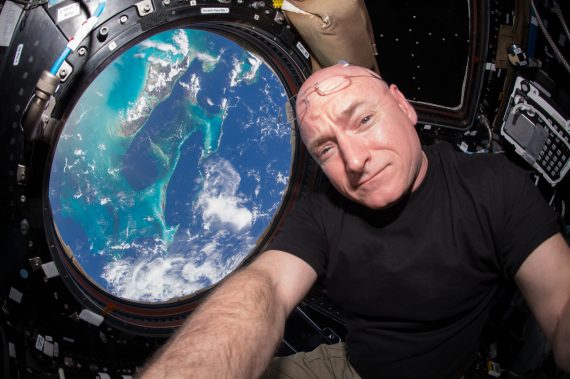


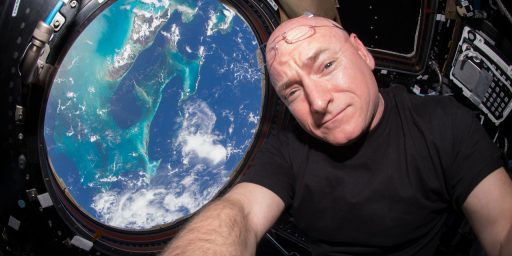
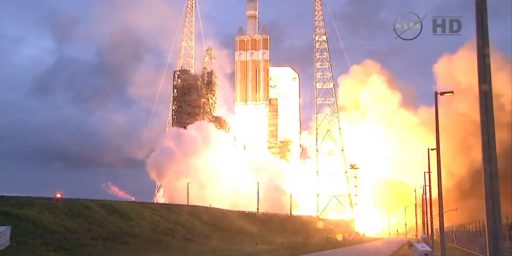
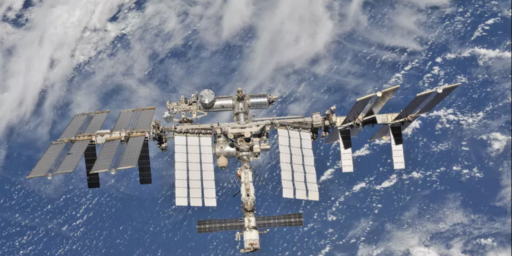
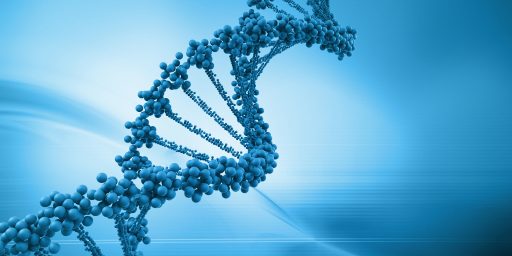
Just wanted to note a bit of bad reporting in the article:
The journalist seems to think that “7% of Scott Kelly’s gene expression changed” is equivalent to “7% of Scott Kelly’s DNA changed”. Gene expression refers to whether particular gene is turned “on” or “off” at the moment, not the state of the DNA encoding that particular gene.
If 7% of Scott Kelly’s DNA had changed he would no longer be human, assuming the change hadn’t killed him outright.
A) Possibly very bad news for human space exploration.
B) But really cool for guys who write science fiction.
I’m not saying it was aliens…
But it’s aliens.
.
——————-
Seriously though…
I have a few million actual miles that I have air traveled. Lot less protection at 35,000 feet.
It’s disconcerting.
@michael reynolds:
From this report it appears that there was some misreporting from the media on this story, the changes are less dramatic than we’ve been led to believe.
I posted an update to the original post.
@Stormy Dragon:
Randall Munroe, of the xkcd web comic, answers wild scientific questions with serious science and humorous commentary and consequences. He could for his next book, write about the serious consequences if one took science misreporting in the media literally.
Good thing the update was posted, because this:
Is just illiterate gibberish by a reporter who would flunk biology 101. In general, you should never read science stories written by someone at CNN, or ABC, or the AP, or any news source that puts a regular journalist on it. You have to at least go to the New York Times, or Scientific American, or some other site which has dedicated, science-trained journalists.
@teve tory:
The NY Times generally has good science reporting but, yes, much of what passes for “science” reporting in most media outlets is ill-informed nonsense. And it only gets worse when websites like Deadspin get ahold of it.
Why are major media outlets’ science reporters so bad at their jobs?
1. The best and the brightest do not get assigned to this beat.
2. These not the best and brightest journalists tend towards the quotable bit. The more provocative, the better.
3. Headline writers are there to gin up interest. They will distort the true story to get people to click on it.
4. They lack the requisite knowledge to know when they are getting played / schmoozed / snookered.
5. They lack the professional standing and wherewithal to push back at editors and headline editors that mutilate their stories.
—
So a 93 % (100 minus 7%) human would basically be a capuchin monkey.
You may find this difficult to believe, but Scott Kelly now weighs ~2.6 kg, is crouched on my shoulder, his prehensile tail wrapped sensuously ’round my neck, and while not begging per se, he is absolutely angling to guilt me into feeding him some tasty morsel of “people food.”
His eyes are so soulful!
It’s a wonder that a mere beast could be so effective at cadging sweet treats from us!
Capuchin Scott Kelly may look cute and adorable on TV, but he is a monster IRL.
Dude pissed on me last Tuesday. No warning. On my shoulder, hugging my head and then just peed all over my ear. Was it a bodily necessity in like “I’ve really gotta pee like right now!” or was it a passive / aggressive proverbial poke in the eye provocation just to witness how I would react?
Capuchin Scott Kelly may look adorkable wrapped around my neck and head, but he is an uber-dick. A monkey-man who pees in my ear just to see how I respond is a straight-up dill hole.
@Doug Mataconis:
Ah. In that case, reverse A and B in my first comment.
And then, of course, there was that thing popping out of his chest…
@de stijl:
Some of it is intellectual demographics. Journalists are often pulled from the same subgroup of people who are the type who will brag that they are no good at math or chemistry or whatnot. Those are just not people who are intellectually prepared to deal with scientific topics.
@michael reynolds: What, “After seven years in space, he was . . . pretty much the same dude but a little older” isn’t a great pitch?
@James Joyner:
Everyone knows that getting older in space turns you into a giant space fetus.
@James Joyner:
Not as good as “My Brother’s a MUTANT From Outer Space!!”
@Stormy Dragon: I was hoping your link was to Jonathan Winters’ character on Mork & Mindy.
@de stijl:
Because they are journalism majors writing about science, rather than science majors doing journalism.
There is a serious long-term self-perpetuating problem in the US driven by the fact that certain high-leverage professions are populated to a very high degree by people who were actively avoiding math and science as students. Lawyers, judges, journalists, teachers, … Supreme Court justices.
@DrDaveT: One reason why a lot of us in IP end up rolling our eyes at whatever SCOTUS comes out with on patents.
@michael reynolds: “B) But really cool for guys who write science fiction.”
Bad news. Stan Lee and Jack Kirby beat you there by almost 60 years…